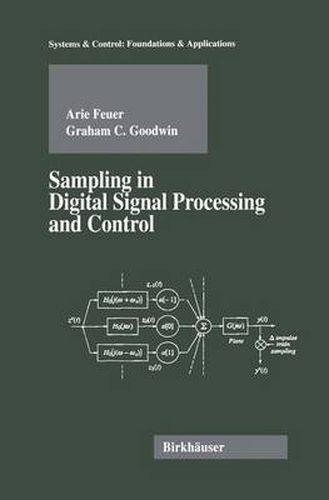Readings Newsletter
Become a Readings Member to make your shopping experience even easier.
Sign in or sign up for free!
You’re not far away from qualifying for FREE standard shipping within Australia
You’ve qualified for FREE standard shipping within Australia
The cart is loading…






This title is printed to order. This book may have been self-published. If so, we cannot guarantee the quality of the content. In the main most books will have gone through the editing process however some may not. We therefore suggest that you be aware of this before ordering this book. If in doubt check either the author or publisher’s details as we are unable to accept any returns unless they are faulty. Please contact us if you have any questions.
Undoubtably one of the key factors influencing recent technology has been the advent of high speed computational tools. Virtually every advanced engi neering system we come in contact with these days depends upon some form of sampling and digital signal processing. Well known examples are digital tele phone systems, digital recording of audio signals and computer control. These developments have been matched by the appearance of a plethora of books which explain a variety of analysis, synthesis and design tools applica ble to sampled-data systems. The reader might therefore wonder what is distinc tive about the current book. Our observation of the existing literature is that the underlying continuous-time system is usually forgotten once the samples are tak en. The alternative point of view, adopted in this book, is to formulate the analy sis in such a way that the user is constantly reminded of the presence of the under lying continuous-time signals. We thus give emphasis to two aspects of sampled-data analysis: Firstly, we formulate the various algorithms so that the appropriate contin uous-time case is approached as the sampling rate increases. Secondly we place emphasis on the continuous-time output response rath er than simply focusing on the sampled response.
$9.00 standard shipping within Australia
FREE standard shipping within Australia for orders over $100.00
Express & International shipping calculated at checkout
This title is printed to order. This book may have been self-published. If so, we cannot guarantee the quality of the content. In the main most books will have gone through the editing process however some may not. We therefore suggest that you be aware of this before ordering this book. If in doubt check either the author or publisher’s details as we are unable to accept any returns unless they are faulty. Please contact us if you have any questions.
Undoubtably one of the key factors influencing recent technology has been the advent of high speed computational tools. Virtually every advanced engi neering system we come in contact with these days depends upon some form of sampling and digital signal processing. Well known examples are digital tele phone systems, digital recording of audio signals and computer control. These developments have been matched by the appearance of a plethora of books which explain a variety of analysis, synthesis and design tools applica ble to sampled-data systems. The reader might therefore wonder what is distinc tive about the current book. Our observation of the existing literature is that the underlying continuous-time system is usually forgotten once the samples are tak en. The alternative point of view, adopted in this book, is to formulate the analy sis in such a way that the user is constantly reminded of the presence of the under lying continuous-time signals. We thus give emphasis to two aspects of sampled-data analysis: Firstly, we formulate the various algorithms so that the appropriate contin uous-time case is approached as the sampling rate increases. Secondly we place emphasis on the continuous-time output response rath er than simply focusing on the sampled response.